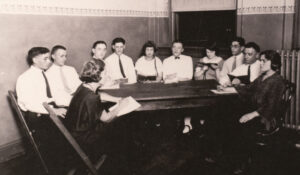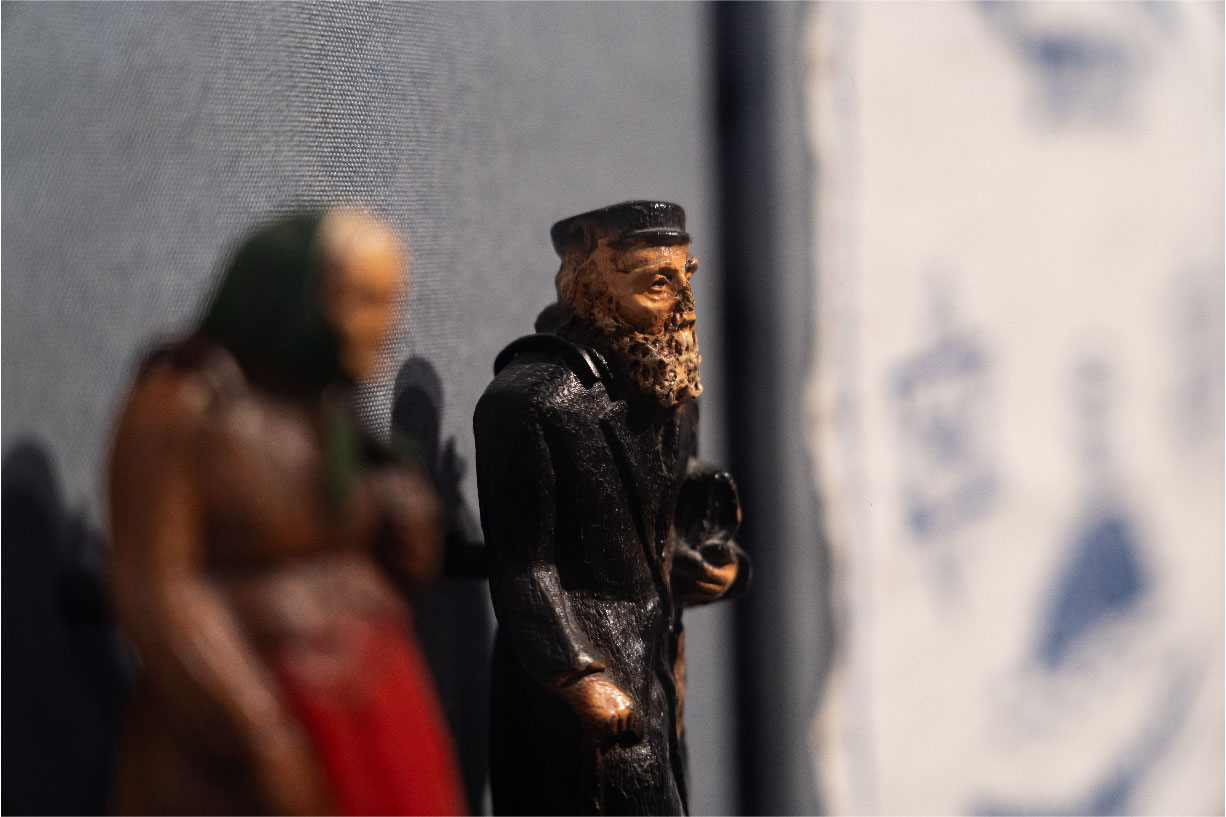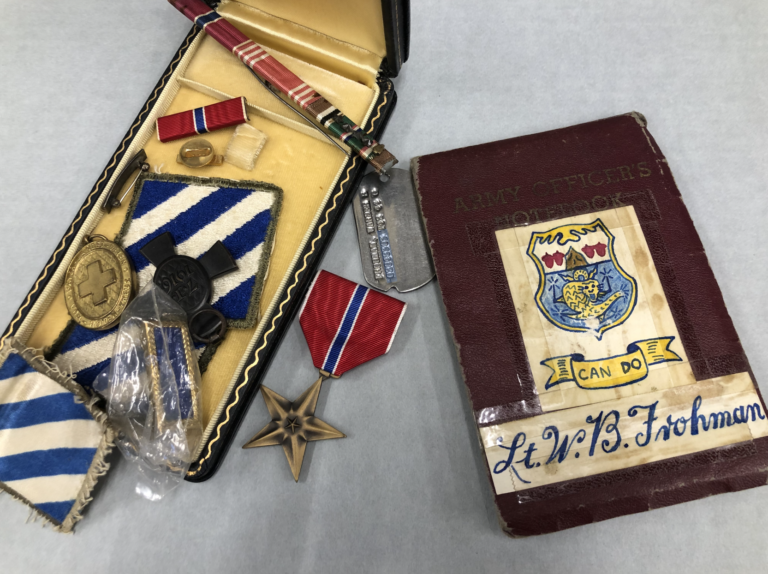
Nebraska’s first Jewish immigrants were merchants who arrived in the 1850s. Large numbers came from Germany and central Europe in the nineteenth century and established a small but influential community. The second wave, into the early twentieth century, fled violent antisemitism in Eastern Europe. The third group included survivors of the Shoah (Holocaust) seeking a place where they could rebuild their shattered lives. The fourth group fled harsh discrimination in the Soviet Union in the 1970s and 1980s.
GERMAN IMMIGRANTS
Omaha’s first Jewish settlers came from Germany and the Austro-Hungarian Empire. They left because of restrictive laws, persecution, and failed attempts at reform that would have granted Jews legal protections. These and other early arrivals participated in many civic and cultural organizations, among them the Board of Trade (later the Omaha Chamber of Commerce). Among the first wave of immigrants, in 1856, were German brothers-in-law Meyer Hellman and Aaron Cahn, Omaha’s first permanent Jewish residents. In 1871, Hellman became the founding president of the Congregation of Israel (later Temple Israel). Bernard Gladstone, from Austria, started a grocery business in 1867 and was also a founder of the Congregation of Israel. Jonas L. Brandeis, from Bohemia, opened a small store in 1881.
EDWARD AND VICTOR ROSEWATER
Edward Rosewater came to the United States from Bohemia as a child. Later, the abolitionist and activist worked as a telegraph operator during the Civil War and was famous for transmitting President Lincoln’s Emancipation Proclamation to the world. An influential Republican, Rosewater was elected to the Nebraska Legislature in 1871 and founded the Omaha Daily Bee. The newspaper became a powerful force in state politics, taking strong positions in favor of labor unions and against corrupt corporations. Rosewater lost his bid for the United States Senate in 1906 and passed away in the Daily Bee building soon after. His son, Victor, took over management of the paper and continued his father’s involvement in Jewish human and civil rights organizations.
Max Meyer & Bros., 1875
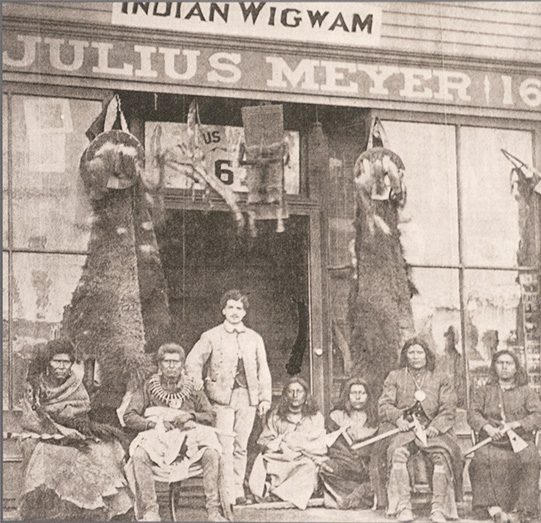
Indian and Chinese Curiosities Trading Post, Circa 1875
Julius Meyer, owner
Julius Meyer and Ponca Chief Standing Bear, Circa 1880
Abraham Sherman, 1836-1931
Helen Altschuler, 1921
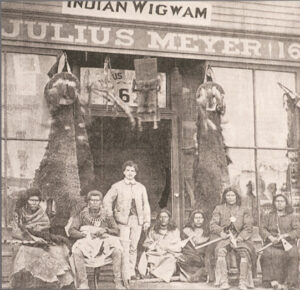
EASTERN EUROPEAN IMMIGRANTS
The largest group of Jewish immigrants came from Eastern Europe between 1880 and 1924. The Hebrew Immigrant Aid Society (HIAS) was founded in 1881 to help Jewish refugees fleeing Russia. Today, it provides vital services to refugees and asylum seekers worldwide. At first welcomed by the Statue of Liberty’s “lamp beside the golden door,” immigrants seeking freedom and opportunity faced growing nativism and prejudice by 1924. Anti-immigration laws sharply reduced the number of people coming to America. Omaha offered jobs in local industries and a friendly atmosphere for new small businesses. Jewish immigrants settled largely in North Omaha out of a desire to live in a close-knit neighborhood. Discrimination kept them, other immigrants, and African Americans out of other areas.
Kulakofsky Family
Reuben and Gertrude, Bernice, Reva, Earl and Seaman were all born in Omaha
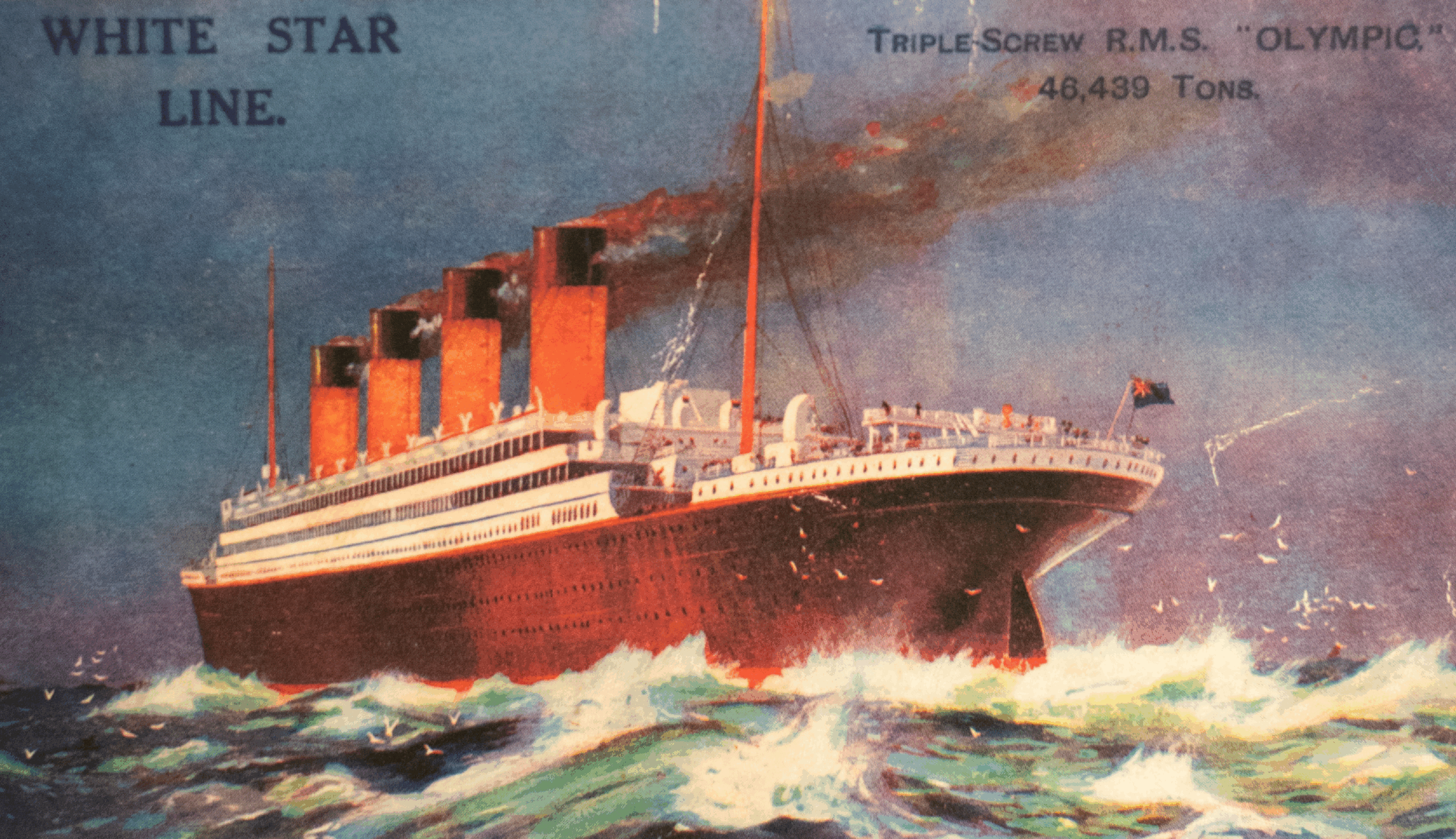
White Star Line, colored picture, 1923

Zysa (Dorothy) Weiss, 1942
Naturalization Papers
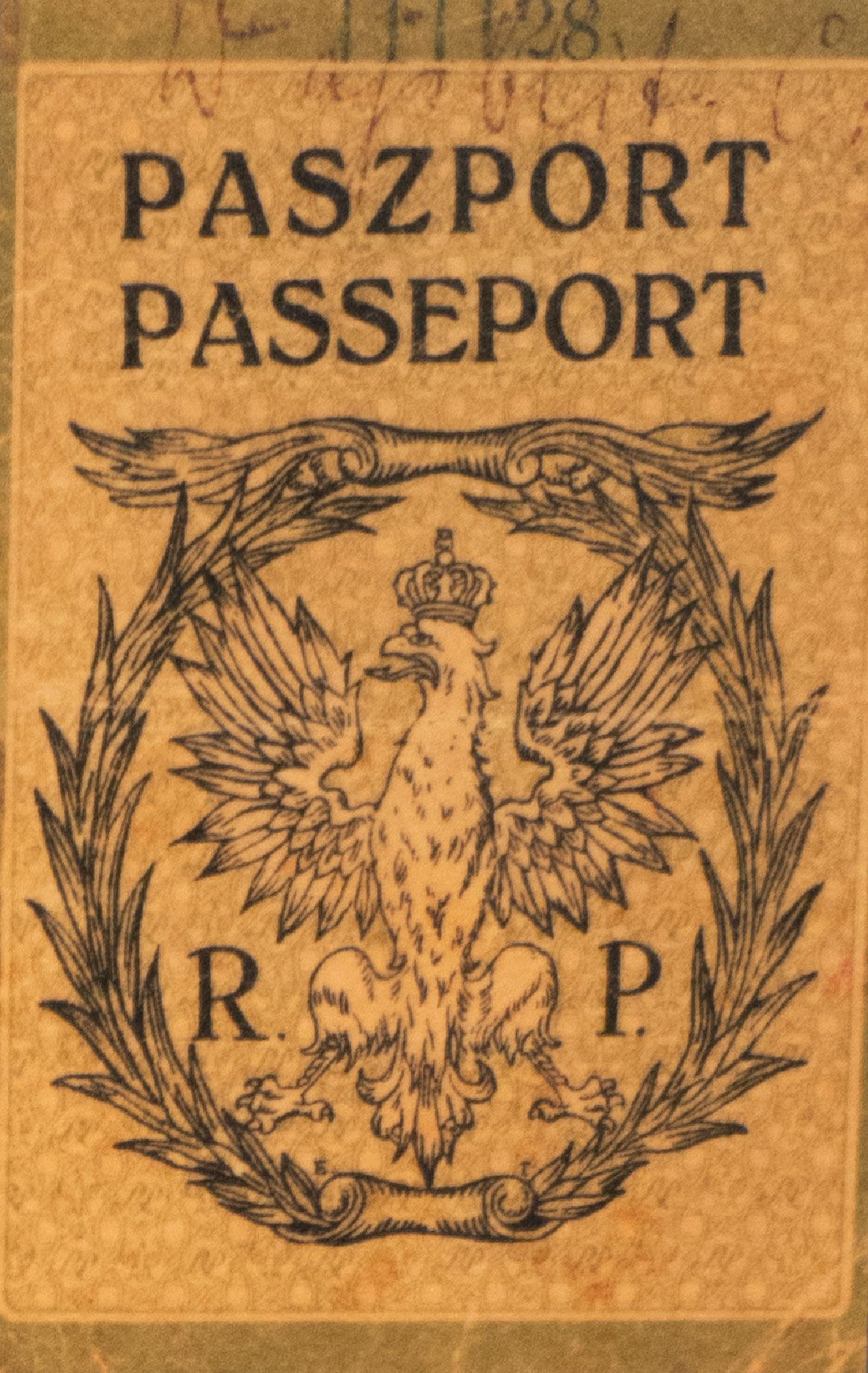
David Weiss
Polish passport

Immigrants taking English Language class, circa 1922/23
(Left to right) “Sam Katz, unknown, Abe Gendler, unknown, Mary Katz Zalkin, unknown, unknown, unknown, David Feldman, Mary Katz Forbes



